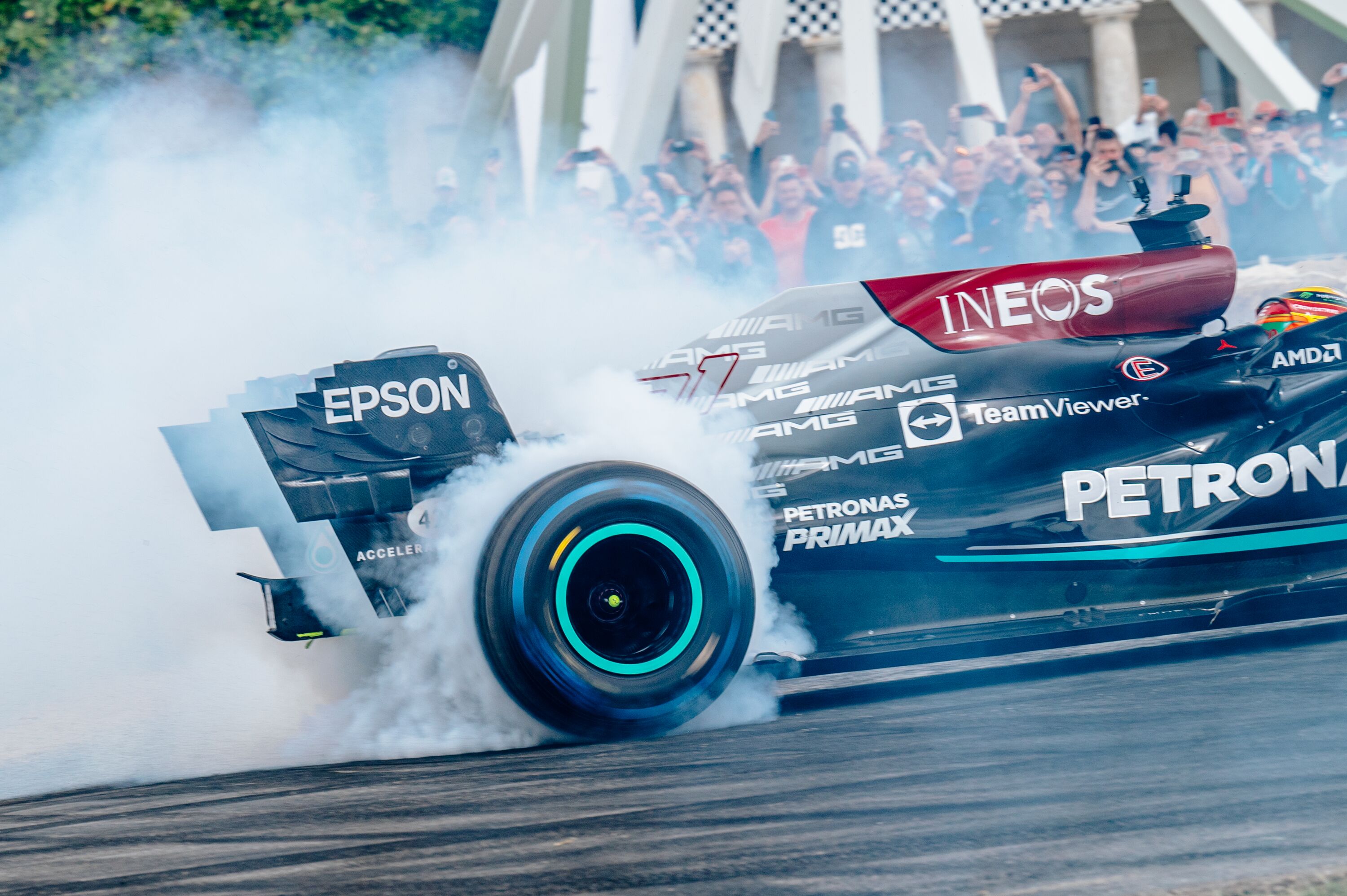What was The Race of Two Worlds?
Imagine going to a race meeting where Porsche’s 919 locked horns with Sebastien Vettel’s Ferrari SF70H F1 car and Takuma Sato’s Indy 500-winning Andretti-Honda. Short of our own Goodwood Festival of Speed, where could you go to see members of the fastest four-wheeled factions on Earth meet in a battle of the racing disciplines? It’s just not a thing any more.

We say anymore because for two years 60 years ago, through 1957 and 1958, the equivalent of such a competition existed. It was at the then-newly constructed Monza bowl and it was called the 500 Miles of Monza. You’ll more likely have heard of it referred to as The Race of Two Worlds. Rather dramatic a christening? Absolutely not. It was quite literally Maserati 250 F meets Jaguar D-Type meets Kurtis Kraft Offenhauser for an international motorsport punch-up.
Punch-up might be a strong description given the spirit of the event, however. The idea gestated in the minds of motor racing bigwigs from both sides of the pond. In 1956 Giuseppe Bacciagaluppi – then-president of the Automobile Club of Milan – hosted Duane Carter of the United States Automobile Club (USAC) at the Italian Grand Prix. It was at this second running of the F1 staple on the newly-completed Monza refit that the bright idea brewed – to have an oval race in Europe to attract both the local F1 and sportscar teams and the USAC Oval racers from across the pond. This would serve as a demonstration of global motorsport with the most cutting-edge and competitive western racers all meeting in one place to swap notes, paint and competitive banter. What’s not to love?
The race, set for June 1957, would use Indy rules whereby 2.8 supercharged and 4.2 atmospheric engine restrictions were enforced, a rolling start would kick off the race and the cars would run anti-clockwise. Ten of the brickyard’s best brawlers would meet ten of Europe’s finest to battle on their terms at the fastest bowl on Earth. Three heats at 63 laps each with hour-long breaks in between would produce a winner based on aggregate top-speed across the three runs.
Predictably, the Americans practically walked it, with Indycars sitting in the top six, four and three spots in heats one two and three respectively. The powerful and slippery Kuzma and Kurtis Krafts were topping circa-170mph – a full 30mph quicker than the speeds they were seeing at Indy. It wasn’t all duck and cover for the Europeans, though, as we can thank the Le Mans-winning Ecurie Ecosse D-Types for the American’s reduced monopoly on the top spots come heat three. While many of the Indycars couldn’t hack it, all three of “Team Scotland’s” Le Mans-proven endurance racers saw it through to the end.
Monzanapolis, as the race came to affectionately be known, had clearly struck a chord, as 1958’s running saw the Europeans return with gusto in a bid to win back their pride on home soil. Ecurie Ecosse famously lead a trickle of custom-made machines with their Indy-bodied Lister-Jaguar (as driven by Jack Fairman), while Britain’s F1 star of ’57 Stirling Moss would pilot the Maserati 420M/58. Alas, it was not to be. The Lister-Jag “Monzanapolis” was nowhere, suffering from a serious power famine in the face of the mighty Offenhauser-engined Americans. Moss did slightly better in his Maserati accruing respectable fourth and fifth places in the first and second heats respectively but came a cropper in heat three. Our best ever heat standing from both runnings of the Race of Two Worlds would be Mike Hawthorn and Phil Hill in the F1 Ferrari Dino, with Hill bringing it home third.
This would be the last ever heat for a Monzanapolis race, however, as the meeting was cancelled after just two years running. Why? In spite of the popularity and enthusiasm it was drumming up both from spectators and teams, the numbers weren’t adding up. Good old bean-counting killed this idyllic exhibition of global motorsport. For two years the race-loving free world gathered at Monza to beat its chest in the face of the war-time adversity we were all still licking our wounds from.
It was a symbol of the strength with which we bounced back and the exponential developments made in those ten years were proudly displayed where a prong of the old Axis once stood but this short-lived oddity wasn’t to be. What kind of glorious oddities could we have been treated to had the yearly meeting continued? We'll never know. The Monzanapolis and a couple of the Indycars were in action at this year’s Revival for the Richmond Trophy but for the modern equivalent of this meeting of motor racing titans, you’ll pretty much only find it at FOS.
Photography courtesy of LAT Images, James Lynch, Drew Gibson and Jochen Van Cauwenberge
Race of Two Worlds
Monzanapolis
Stirling Moss
Lister-Jaguar
monza






































































